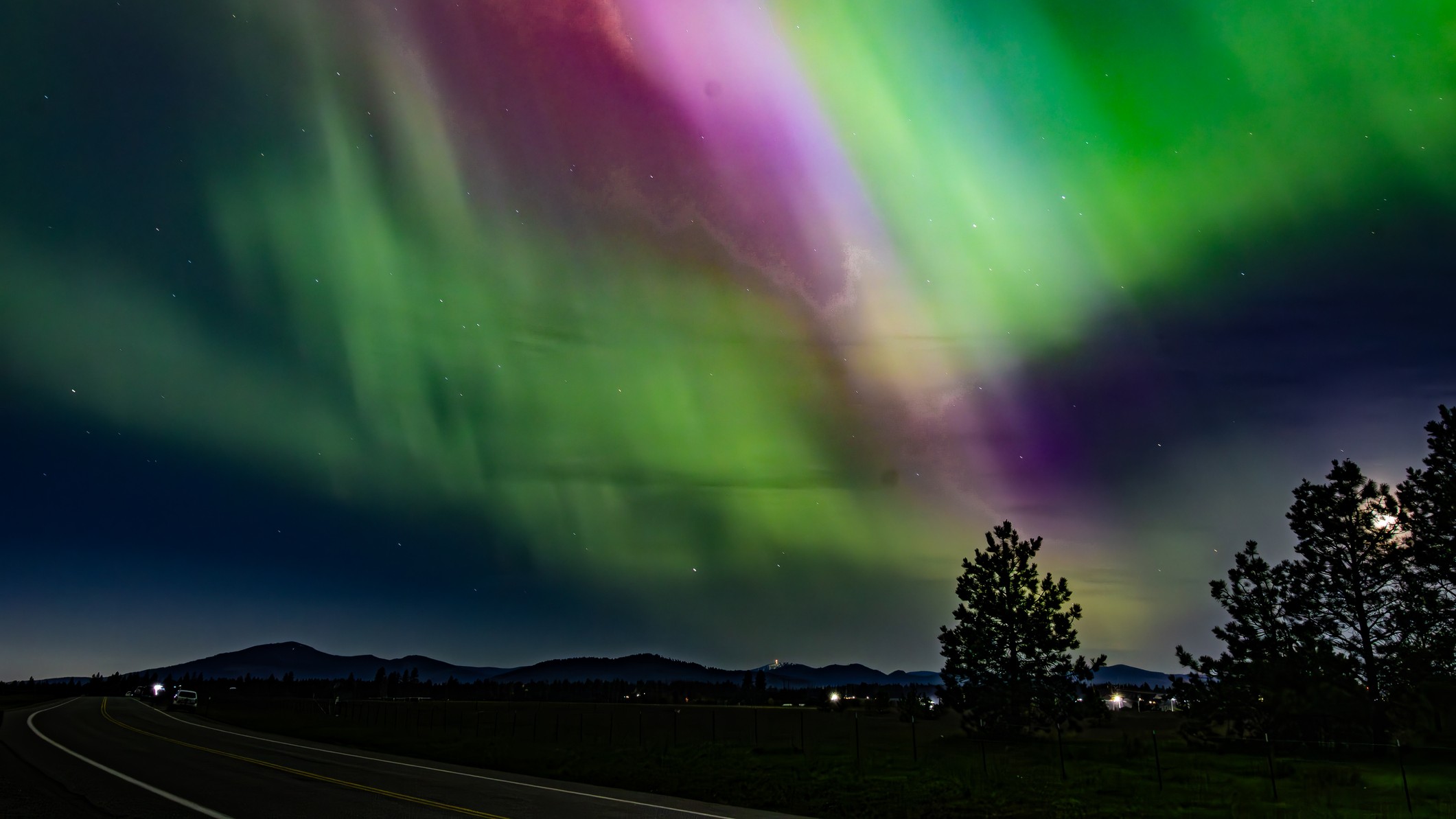The northern lights, or aurora borealis, usually appear in areas near the Arctic Circle, lighting up skies in regions such as Alaska, Canada, and Scandinavia. However, during periods of heightened solar activity, these mesmerizing displays can be seen much farther south. Current predictions suggest that this storm could allow residents in parts of the central and even southern United States to witness the shimmering green, pink, and purple lights that are typically reserved for polar skies.
This unusual visibility is linked to an increase in solar activity, specifically a large release of charged particles from the Sun. When these particles collide with Earth’s magnetic field, they create the colorful glow we associate with auroras. The stronger the solar storm, the farther toward the equator these lights can travel. This upcoming storm ranks high on the geomagnetic scale, indicating the possibility of a widespread auroral display if skies remain clear.
The origin of the event lies in a coronal mass ejection (CME), a massive burst of solar plasma and magnetic fields launched from the Sun’s surface. When these ejections are directed toward Earth, they can disrupt not only the atmosphere but also critical technologies. Past events have shown that strong geomagnetic storms can interfere with satellite communications, GPS systems, and even power grids. While scientists do not anticipate catastrophic damage from this particular storm, utility companies and satellite operators have been alerted to take precautionary measures.
Specialists from the National Oceanic and Atmospheric Administration (NOAA) have released warnings aimed at both amateur stargazers and industry experts. They recommend preparing for the peak of auroral activity, which is anticipated to happen within 24 to 48 hours following the arrival of the CME. Areas including the Midwest, the Great Plains, and potentially sections of southern regions such as Texas and Oklahoma might witness an unusual sky display. For numerous individuals, this presents a unique chance to observe the aurora without having to journey thousands of miles to the north.
The best way to experience this phenomenon is to head to an area away from city lights. Urban light pollution significantly reduces the visibility of auroras, so rural regions will provide the clearest views. Observers are encouraged to look toward the northern horizon during nighttime hours, particularly around midnight when the geomagnetic activity tends to peak. Patience will be key, as the displays can vary in intensity and duration depending on atmospheric conditions and the solar wind’s interaction with Earth’s magnetic field.
Auroras are created when electrons and protons from the Sun collide with oxygen and nitrogen in the atmosphere’s upper layers. These interactions release energy, producing lively hues that illuminate the sky. Green is the predominant color, caused by oxygen molecules located around 60 miles above the Earth, whereas red and violet shades emerge at greater heights. This color display is not just visually stunning but also an intriguing scientific phenomenon showcasing the fragile equilibrium between solar energy and Earth’s magnetic barrier.
While this event is generating excitement among stargazers, it also underscores the importance of space weather monitoring. Scientists track solar storms because of their potential to disrupt critical infrastructure. In 1989, a major geomagnetic storm caused a nine-hour power outage in Quebec, leaving millions without electricity. Although today’s power grids and technology systems are more resilient, the growing reliance on satellites for communication and navigation makes modern society particularly vulnerable to space weather.
In addition to power disruptions, solar storms can pose risks to astronauts aboard the International Space Station. High-energy particles can increase radiation exposure, prompting NASA and other space agencies to issue protective protocols during severe events. Airlines flying polar routes may also adjust flight paths to minimize exposure and avoid communication issues. These precautions illustrate how interconnected our technological systems are with the activity of the Sun, even though it is nearly 93 million miles away.
For those passionate about photography and stargazing, this storm offers a prime chance to snap stunning pictures of the night sky. Anticipation is building across social media, with people organizing visits to locations with minimal light pollution to record the event. Specialists advise utilizing cameras with manual options and extended exposure times to successfully capture the aurora. Using tripods and wide-angle lenses can aid in creating clear and impressive images of the illuminated skyline. For those who can’t make the trip, live streams and photos shared by the community are expected to spread around online after the storm.
Looking ahead, scientists expect solar activity to continue increasing over the next few years as the Sun approaches the peak of its current solar cycle. This means similar events could become more frequent, though not every solar storm will produce auroras visible so far south. For now, this particular geomagnetic storm stands out as one of the most significant in recent memory, offering both beauty and a reminder of our planet’s vulnerability to solar forces.
As the storm approaches, experts urge the public to remain informed through official channels such as NOAA’s Space Weather Prediction Center. These agencies provide real-time updates on geomagnetic conditions, aurora forecasts, and potential impacts on technology. For those fortunate enough to witness the northern lights during this rare occurrence, it will serve as a stunning example of nature’s power and elegance—a cosmic performance unfolding high above our heads.
From a scientific standpoint, solar storms provide important insights into the connection between the Sun and Earth, assisting scientists in improving forecasting models. Comprehending the formation and expansion of these storms is vital for protecting infrastructure and planning upcoming space explorations. Every occurrence adds to an expanding collection of knowledge that helps society be more equipped for the next significant solar eruption.
When conditions are favorable, the skies over vast areas of the United States might light up with shades of green and red, enchanting millions and reminding us of our role in the immense solar system. This phenomenon is not just a treat for the eyes but an experience that brings people together, encouraging them to step outside and witness nature’s incredible light display.




